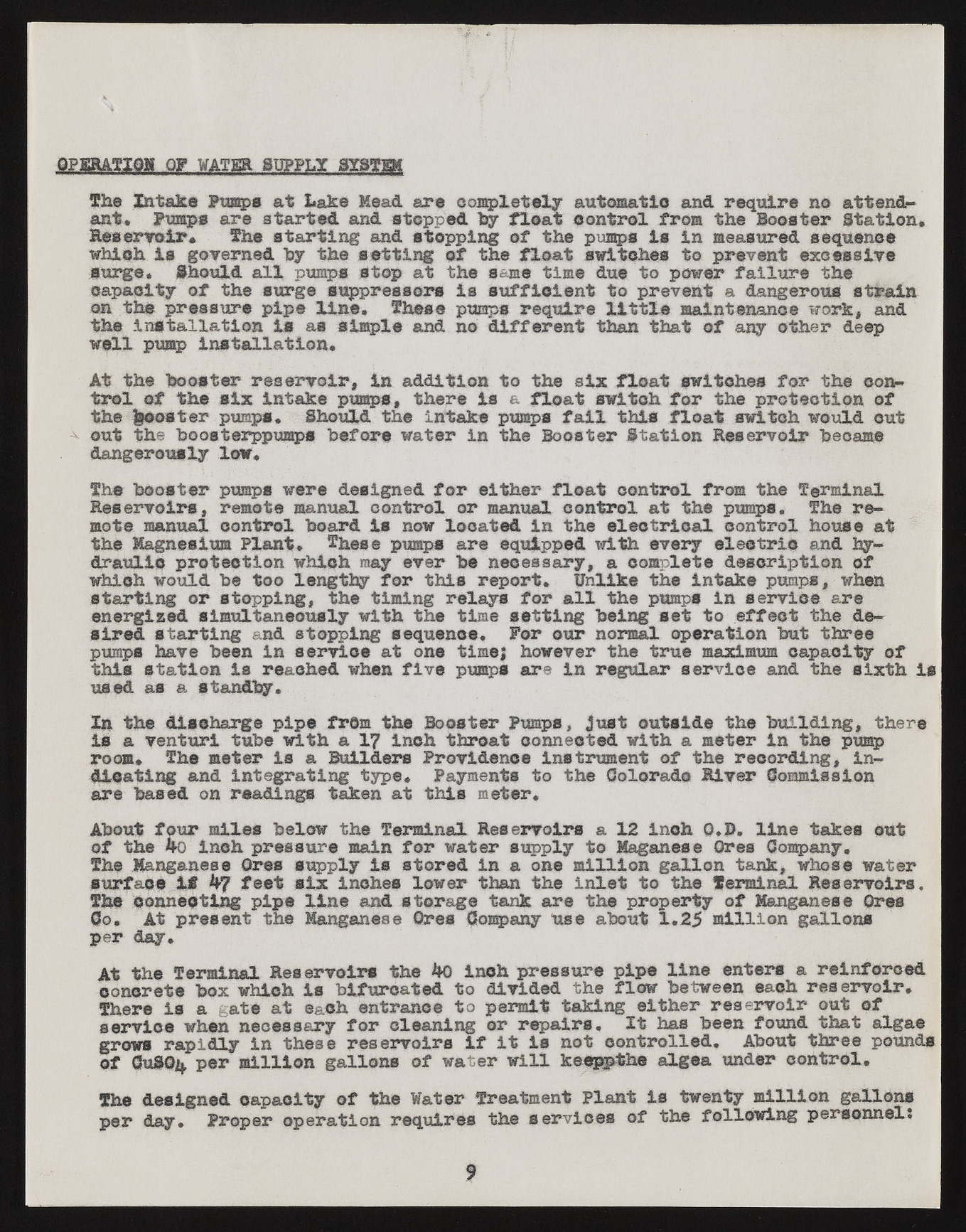Copyright & Fair-use Agreement
UNLV Special Collections provides copies of materials to facilitate private study, scholarship, or research. Material not in the public domain may be used according to fair use of copyrighted materials as defined by copyright law. Please cite us.
Please note that UNLV may not own the copyright to these materials and cannot provide permission to publish or distribute materials when UNLV is not the copyright holder. The user is solely responsible for determining the copyright status of materials and obtaining permission to use material from the copyright holder and for determining whether any permissions relating to any other rights are necessary for the intended use, and for obtaining all required permissions beyond that allowed by fair use.
Read more about our reproduction and use policy.
I agree.Information
Digital ID
Permalink
Details
More Info
Rights
Digital Provenance
Publisher
Transcription
The Intake Pumps at Stake Mead are completely automatic and require no attendant. Pomps are started and stopped lay float oontrol from the Booster Station, Reservoir, The starting and stopping of the pumps Is in measured sequence which Is governed by the setting of the float switches to prevent excessive Surge* Should all pumps stop at the same time due to power failure the capacity of the surge suppressors is sufficient to prevent a dangerous strain on the pressure pipe line. These pumps require little maintenance work, and the installation is as simple and no different than that of any other deep well pump Installation, At the booster reservoir, in addition to the six float switches for the oontrol of the six Intake pumps, there Is a float switch for the protection of the Rooster pumps* Should the intake pumps fail this float switch would cut out the boosterppump# "before water in the Booster Station lieservoir "became dangerously low. The "booster pump# were designed for either float oontrol from the Terminal Reservoirs, remote manual control or manual control at the pumps. The remote manual oontrol hoard is now located in the electrical control house at the Magnesium Plant, These pump# are equipped with every electric and hydraulic protection which may ever he necessary, a complete description of which would he too lengthy for this report* Wnllke the Intake pumps, when starting or stopping, the timing relays for all the pumps in service are energised simultaneously with the time setting being set to effect the desired starting and stopping sequence. For our normal operation hut three pumps have been In service at one time; however the true maximum capacity of this station is reached when five pumps are in regular service and the sixth is used as a standby. In the discharge pipe from the Booster Pumps, just outside the "building, there is a venturi tube with a 17 inch throat connected with a meter in the pimp room. The meter Is a Builders Providence instrument of the recording, indicating and integrating type. Payments to the Colorado River Commission are based on readings taken at this meter. About four miles below the Terminal Reservoirs a 12 inoh O.X>. line takes out of the Ao inch pressure main for water supply to Maganese Ores Company, The Manganese Ores supply is stored in a one million gallon tank, whose water surface 10 Af feet six inohes lower than the inlet to the Terminal Reservoirs. The connecting pipe line and storage tank are the property of Manganese Ores Co. At present the Manganese Ores Company use about 1.25 million gallons per day. At the Terminal Reservoirs the AO inch pressure pipe line enters a reinforced concrete box which la bifurcated to divided the flow between each reservoir. There is a gate at each entrance to permit taking either reservoir out of service when necessary for cleaning or repairs. It has been found that algae grows rapidly in these reservoirs if it is not controlled. About three pounds of $ui% per million gallons of water will keegpthe algea under control. She designed capacity of the Water Treatment Plant is twenty million gallons per day. Proper operation requires the services of the following personnel. SHATIQH Qg WAT&3. SUPPLY SYSTEM 9

